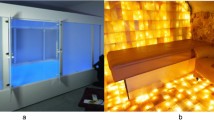Abstract
Experiments reported in the literature involving interruption of behavior and leading to symptoms of anxiety in conditioned rats are analyzed from the neurophysiologic point of view and compared with the effects of inescapable electric shocks in dogs. It is suggested that anxiety and neurotic behavior (failure to attempt to escape from shock) are accompanied by a state of high ergotropic excitation which leads to a “spilling over” of ergotropic discharges into the trophotropic system. The resulting simultaneous ergotropic and trophotropic discharges impinging on the cerebral cortex are thought to induce abnormal emotions and behavior. Normal behavior is restored by reducing excessive ergotropic activity and re-establishing reciprocal relations between the ergotropic and trophotropic systems.
In 1965 I presented a theory of anxiety based on a physiologic analysis of various forms of experimental and clinical neuroses in terms of the activities of, and the mutual relations existing between, the trophotropic and ergotropic systems (Gellhorn, 1965; Gellhorn and Loofbourrow, 1963). In the meantime the work of Mandleret al. (Mandler, 1964; Mandler and Watson, 1966), who emphasized that anxiety is produced through interruption of behavior, came to my attention. These investigations pose two questions:
-
1.
Is the interpretation of anxiety presented in my earlier study applicable to Mandler's experiments and kindred observations?
-
2.
What is the physiologic mechanism associated with the appearance of anxiety following interruption of behavior, and neurosis-producing conditions?
Similar content being viewed by others
References
Alexander, L.: Effects of psychotropic drugs on conditional responses in man. In: Rothlin, E. (Ed.):Neuro-Psychopharmacology,2:93–123, 1961.
Anderson, O. D., and Parmenter, R.: A long-term study of the experimental neurosis in the sheep and dog.Psychosom. Med. Monographs,2:1–149, 1941.
Belanger, D., and Feldman S. M.: Effects of water deprivation upon heart rate and instrumental activity in the rat.J. Comp. Physiol. Psychol.,55:220–225, 1962.
Clemente, C. D., Sterman, M. B., and Wyrwicka, W.: Post-reinforcement EEC synchronization during alimentary behavior.EEG Clin. Neurophysiol.,16:355–365, 1964.
Cohen, S. I., Silverman, A. J., and Burch, N. R.: A technique for the assessment of affect change.J. Nerv. Ment. Dis.,124:352–360, 1956.
Freeman, G. L., and Pathman, J. H.: The relation of overt muscular discharge to physiological recovery from experimentally induced displacement.J. Exp. Psychol.,30:161–174, 1942.
Freud, S.:The Problem of Anxiety. New York, Norton, 1963.
Gantt, W. H.: Factors involved in the development of pathological behavior: schizokinesis and autokinesis.Perspect. Biol. Med.,5:473–482, 1962.
Gelhorn, E.:Autonomic Imbalance and the Hypothalamus. Minneapolis, University of Minnesota Press, 1957.
Gellhorn, E.: The influence of curare on hypothalamic excitability and the electroencephalogram.EEG Clin. Neurophysiol.,10:697–703, 1958.
Gellhorn, E.: On successive autonomic induction of the parasympathetic system.Arch., Internat. Physiol. Biochem. 67:59–77, 1959.
Gellhorn, E.: The alteration of central autonomic excitability and balance induced by noradrenaline and hypotensive drugs (acetylcholine and histamine).Acta Neuroveg.,20:490–513, 1960.
Gellhorn, E.: Motion and emotion.Psychol. Rev.,71:457–472, 1964.
Gellhorn, E.:Principles of Autonomic-Somatic Integrations. Minneapolis, University of Minnesota Press, 1967.
Gellhorn, E.: The tuning of the nervous system: Physiological foundations and implication for behavior.Perspect. Biol. Med.,10:559–591, 1967.
Gellhorn, E., and Loofbourrow, G. N.:Emotions and Emotional Disorders. New York, Hoeber, 1963.
Himwich, H. E.:Brain Metabolism and Cerebral Disorders. Baltimore, Williams and Wilkins, 1941.
Jacobsen, E., and Skaarup Y.: Experimental induction of conflict-behavior in cats: Its use in pharmacological investigations.Acta Pharmacol Toxicol.,11:117–124, 1955.
Kopa, J., Szabo, J., and Grastyan, E.: A dual behavioural effect from stimulating the same thalamic point with identical stimulus parameters in different conditional reflex situations.Acta physiol. Hung.,21:207–214, 1962.
Lewin, K.:A Dynamic Theory of Personality. New York, McGraw-Hill, 1935.
Liddell, H. S.:Emotional Hazards in Animals and Man. Springfield, Ill., Charles C Thomas, 1956.
Malmo, R. B.: Motivation. In: Freedman, A. M. and Kaplan, H. I. (Eds.):Comprehensive Textbook of Psychiatry. Baltimore, Williams & Wilkins, 1967, Pp. 172–180.
Malmo, R. B., and Belanger, D.: Related physiological and behavioral changes: What are their determinants? In:Sleep and Altered, States of Consciousness. Res. Publ. Assoc. Nerv. Ment. Dis. 45:288–318, 1967.
Mandler, G.: The interruption of behavior. In: Levine, D. (Ed.):Nebraska Symposium on Motivation. Lincoln, Nebraska, University of Nebraska Press 1964, Pp. 163–219.
Mandler, G., and Watson, D. L.: Anxiety and the interruption of behavior. In: Spielberger, C. D. (Ed.):Anxiety and Behavior. New York, Academic Press, 1966, Pp. 263–288.
Miller, G. A., Galanter, E. H., and Pribram, K.:Plans and the Structure of Behavior. New York, Henry Holt & Co., 1960.
Mowrer, O. H., and Viek, P.: An experimental analogue of fear from a sense of helplessness.J. Abnorm. Soc. Psychol.,43:193–200, 1948.
Overmier, J. B., and Seligman, M. E. P.: Effects of inescapable shock upon subsequent escape and avoidance responding.J. Comp. Physiol. Psychol.,63:28–33, 1967.
Pavlov, I. P.: Lectures on Conditioned Reflexes. New York, International Publishers, 1928.
Richter, C. P.: On the phenomenon of sudden death in animals and man.Psychosom. Med.,19:191–198, 1957.
Rose, J. A., Tainton-Pottberg, A., and Anderson, O. D.: Effects of insulin shock on behavior and conditioned reflex action in the well trained sheep.Proc. Soc. Exper. Biol. Med.,38:653–655, 1938.
Seligman, M. E. P., and Maier, S. F.: Failure to escape traumatic shock.J. Exper. Psychol.,74:1–9, 1967.
Seligman, M. E. P., Maier, S. F., and Geer, J. H.: The alleviation of learned helplessness.J. Abnorm. Psychol. In press.
Wheatley, M. D.: The hypothalamus and affective behavior. A study of the effects of experimental lesions, with anatomic correlations.Arch. Neurol. Psychiat.,52:296–316, 1944.
Wood, C. G., Jr., and Hokanson, J. E.: Effects of induced muscular tension on performance and the inverted function.J. Personality Soc. Psychol. 1:506–510, 1965.
Author information
Authors and Affiliations
Additional information
Supported by Grant MH 06552-06 from the National Institutes of Health.
Rights and permissions
About this article
Cite this article
Gellhohn, E. Interruption of behavior, inescapable shock, and experimental neurosis: A neurophysiologic analysis. Conditional Reflex 2, 285–293 (1967). https://doi.org/10.1007/BF03034127
Issue Date:
DOI: https://doi.org/10.1007/BF03034127



